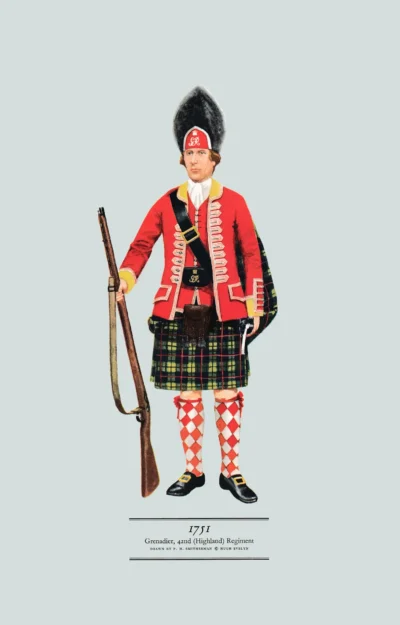Pipe Major, Scots Guards, 1959
£12.00
Raised 1642; from1877Scots Guards – SG (scroll down for a more detailed Description)
Published 1963 by © Hugh Evelyn Limited; drawn by Colonel Philip Henry Smitherman (1910-1982), Royal Corps of Signals
Size: c. 24.5 x 37.5 cm [9 ½ ″ x 14 ½ ″] (may vary slightly from printers’ cut 50 years ago)
Printed on on medium cardstock weighing 144 g/sm2 faced in light greyish blue (RGB c. d5dede)
Print is STANDARD size – shipping is the same for 1 to 10 prints (based on largest print size in your order) – see Shipping & Returns.
In stock
Description
The Scots Guards, part of the Guards Division, is one of the Foot Guards regiments of the British Army. By order of King Charles I in 1642, the regiment was raised by Archibald Campbell, 1st Marquess of Argyll for service in Ireland, and was known as the Marquis of Argyll’s Royal Regiment. It was only placed on the English Establishment (thus becoming part of what is now the British Army) in 1686. The only members of the Scots Guards to wear Scottish dress were the pipers. A Pipe Major is shown here. For the rest of the regiment, the only clues to their Scottish identity are the diced borders on their forage caps, and their cap and collar badges displaying the St Andrew’s cross and the thistle. Most regiments clothe their pipers in green with gold lace and a Glengarry cap, but the Scots Guards clothe theirs in blue with silver lace and a feather bonnet like the Black Watch. Their blue doublets are double-breasted. The pipe major has also retained his claymore. Originally all Highland soldiers were armed ·with this weapon, but all except officers and pipers gave them up in the second half of the eighteenth century, and the pipers gradually lost them in the second half of the nineteenth. This pipe major also wears a sash over the left shoulder, in the fashion given up by warrant officers and N.C.O.s soon after the Crimean War, when their sashes were transferred to the right shoulder. This was the only instance left in the army of a sash worn by a warrant officer or N.C.O. in this long-abandoned fashion.
Additional information
| Weight | 0.0123 kg |
|---|---|
| Dimensions | 23 × 37 cm |





